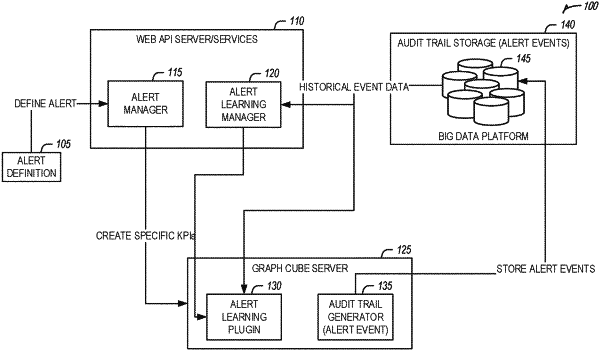| CPC G06F 16/283 (2019.01) [G06F 16/9024 (2019.01); G06N 20/00 (2019.01)] | 24 Claims |

|
1. A system for event-based learning of alert conditions, for multi-dimensional data, comprising:
a storage device, comprising a data store to host data provided from a multi-dimensional data processing system, the data maintained in a graph cube network;
at least one processor; and
memory including instructions that, when executed by the at least one processor, cause the at least one processor to perform operations to:
evaluate a set of training data from the data store to train a problem correlation machine learning model that includes a feature set correlated to problematic performance of intersections in the graph cube network;
process the data obtained from the multi-dimensional data processing system, to identify the data as corresponding to a data event;
generate a definition for the data event, including a set of key performance indicators (KPIs) for the data event, based on a determination that a definition does not exist for the data event;
create a calculation configuration for the data event based on the set of KPIs;
evaluate historical data from the multi-dimensional data processing system with the calculation configuration to calculate the set of KPIs;
apply a feature importance analysis machine learning algorithm to the set of KPIs to identify one or more features of the feature set that indicate a persistent issue, the one or more features of the feature set including at least one of a product category, a product region, a product with seasonal components, a transport mode used, or an upstream distribution center;
establish an alert condition for the data event based on the set of KPIs;
store the alert condition in the multi-dimensional data processing system in correspondence with a scope of the alert condition;
in response to establishment of the alert condition, evaluate the alert condition and the set of KPIs using the problem correlation machine learning model adopting the one or more features that indicate the persistent issue to calculate a probability for a root cause of the alert condition;
automatically identify the root cause of the alert condition based on the probability; and
store the root cause with the alert condition in the multi-dimensional data processing system.
|